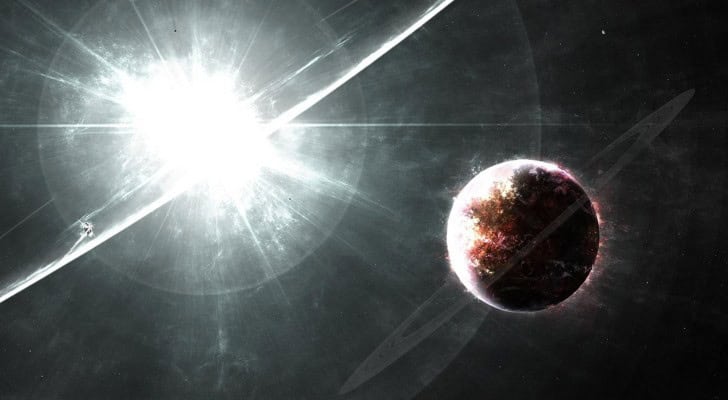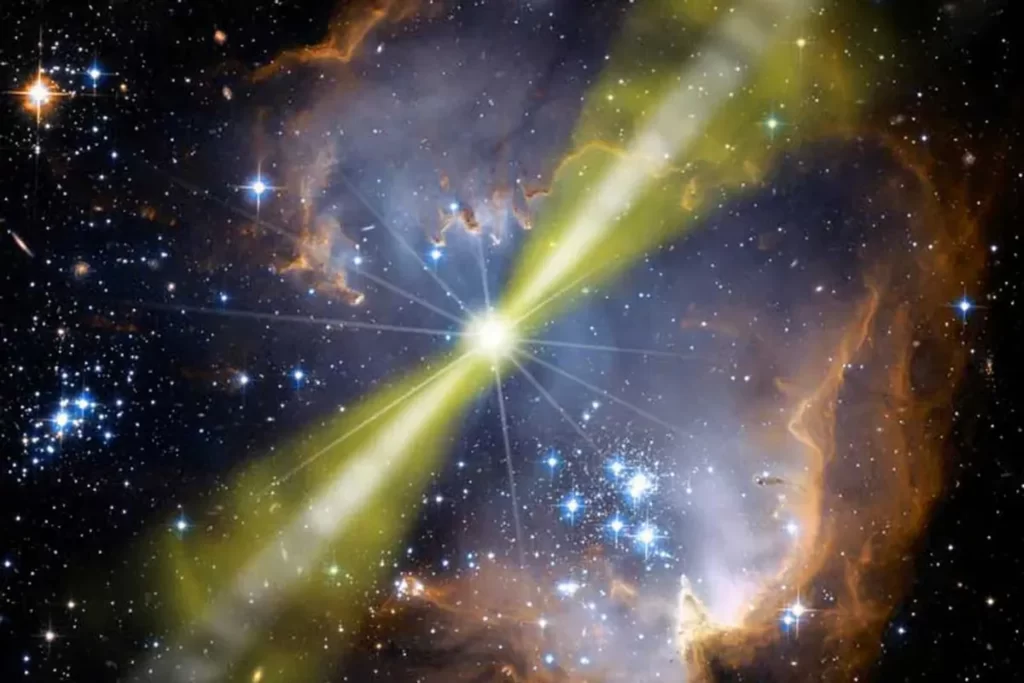Scientists have found evidence of a gamma ray burst that happened 12.1 billion years ago. This is one of the earliest examples of these very powerful explosions that we know of. Also, it’s one of the brightest things ever seen.

Gamma-Ray bursts are rare, very powerful explosions that are thought to happen when neutron stars form or merge.

Farley Ferrante, a graduate student in the Department of Physics at Southern Methodist University and one of the three astronomers who watched the afterglow, said, “NASA says that gamma-ray bursts are the most powerful explosions in the universe since the Big Bang.” “These bursts give off more energy in 10 seconds than our sun is expected to give off in its entire 10 billion-year life span.”
Gamma Ray Bursts are first seen in the high-energy part of the electromagnetic spectrum, as the name suggests. However, the afterglow can be seen at other wavelengths. After the Swift Satellite tells ground-based telescopes about a burst, they race to catch the “optical tail.” In this case, it only took 55 seconds from the time Swift reported the event to the time the first person on the ground saw it.

The robotic telescope at SMU saw GRB 140419A at 11 p.m. on April 19.
This is not the oldest known gamma-ray burst. It is thought that GRB 090423 happened 13 billion years ago, when the universe was only 4% as old as it is now. But for something so far away, it was surprisingly bright. Robert Kehoe, a professor at SMU, said that its 12th magnitude brightness is only ten times less bright than what can be seen with backyard binoculars. “The difference in brightness is about the same as between the brightest star you can see in the sky and the dimmest star you can see with the naked eye on a clear, dark night,” Kehoe said. “That was a huge explosion, considering this thing was at the edge of the visible universe. That was a big deal. “Very big.”

GRB 140419A wasn’t even the brightest gamma ray burst that has ever been seen. In 2008, GRB 080319B was so bright that people with great eyesight could have seen it with the naked eye even when the sky was dark. But because it was so bright and far away, the more recent event is one of the most powerful ever seen.
Gamma Ray Bursts are still not fully understood, but most of the time, it is clear that they are linked to supernovae. “Gamma-ray bursts may be supernovae’s more powerful cousins, or they may be explosions in which more of the debris is sent in our direction. We can learn about supernovae by studying them,” Kehoe said.

Four days later, the same SMU-run telescope tracked the light from a star that was almost as far away but not as bright.